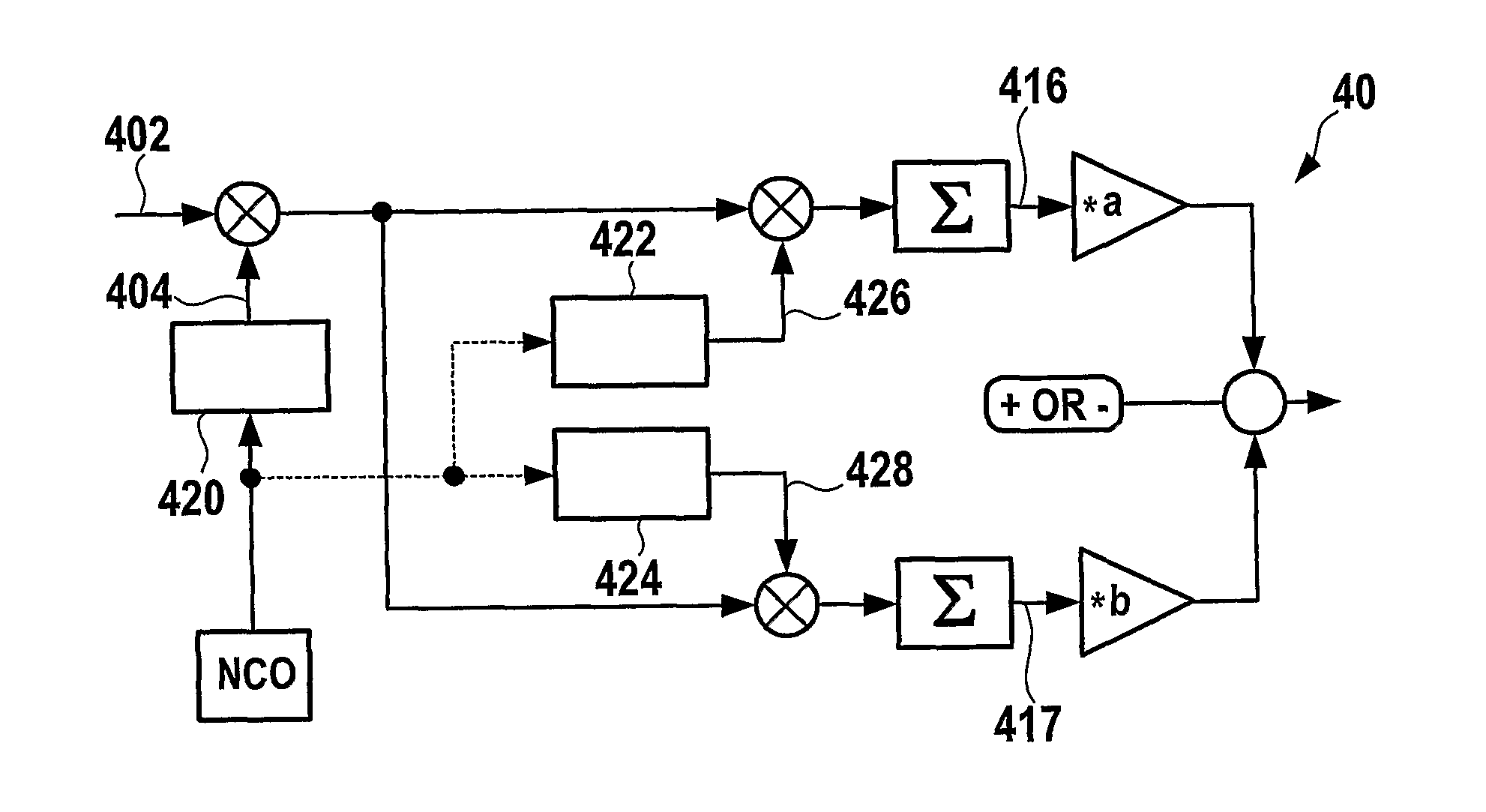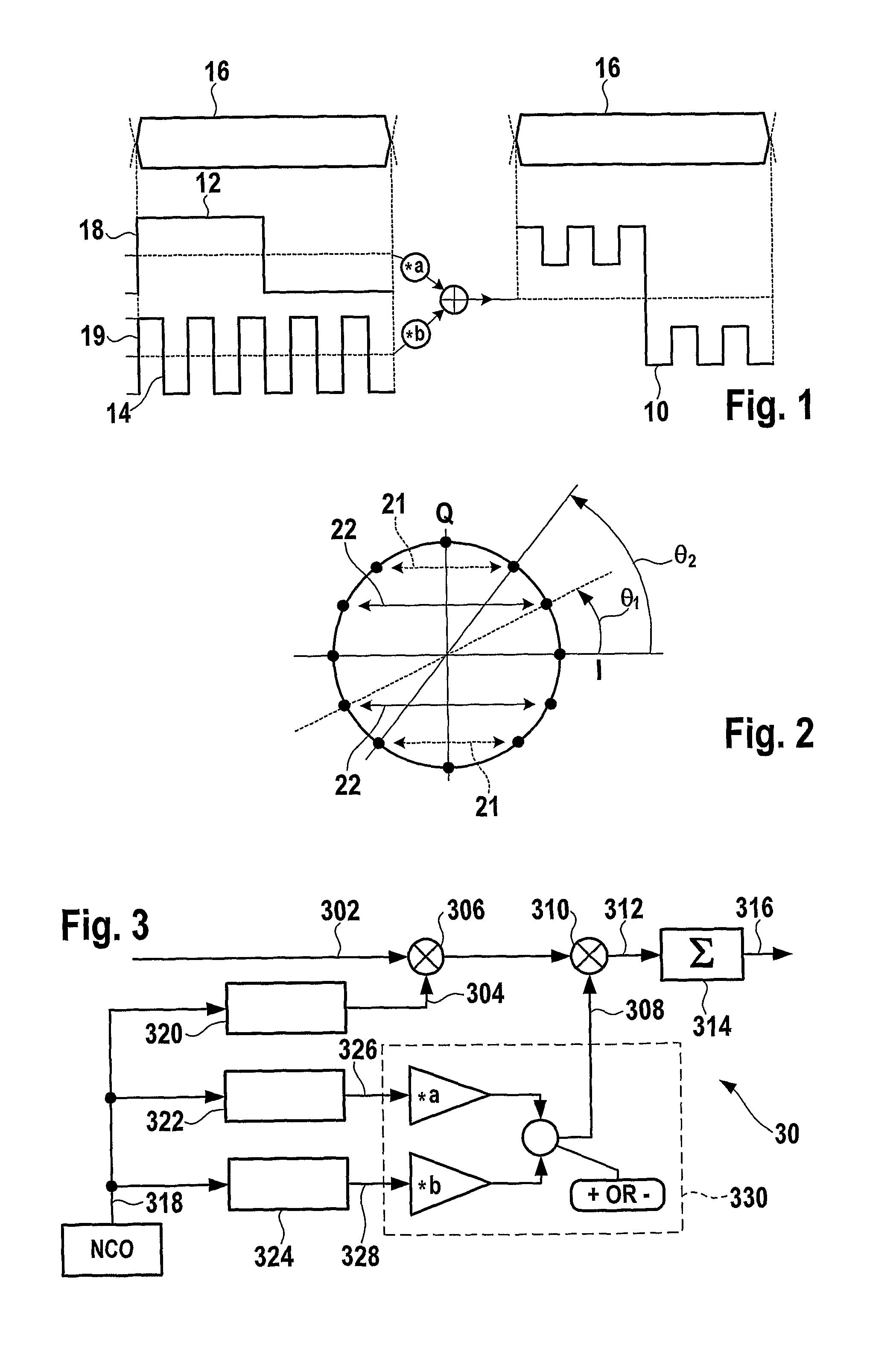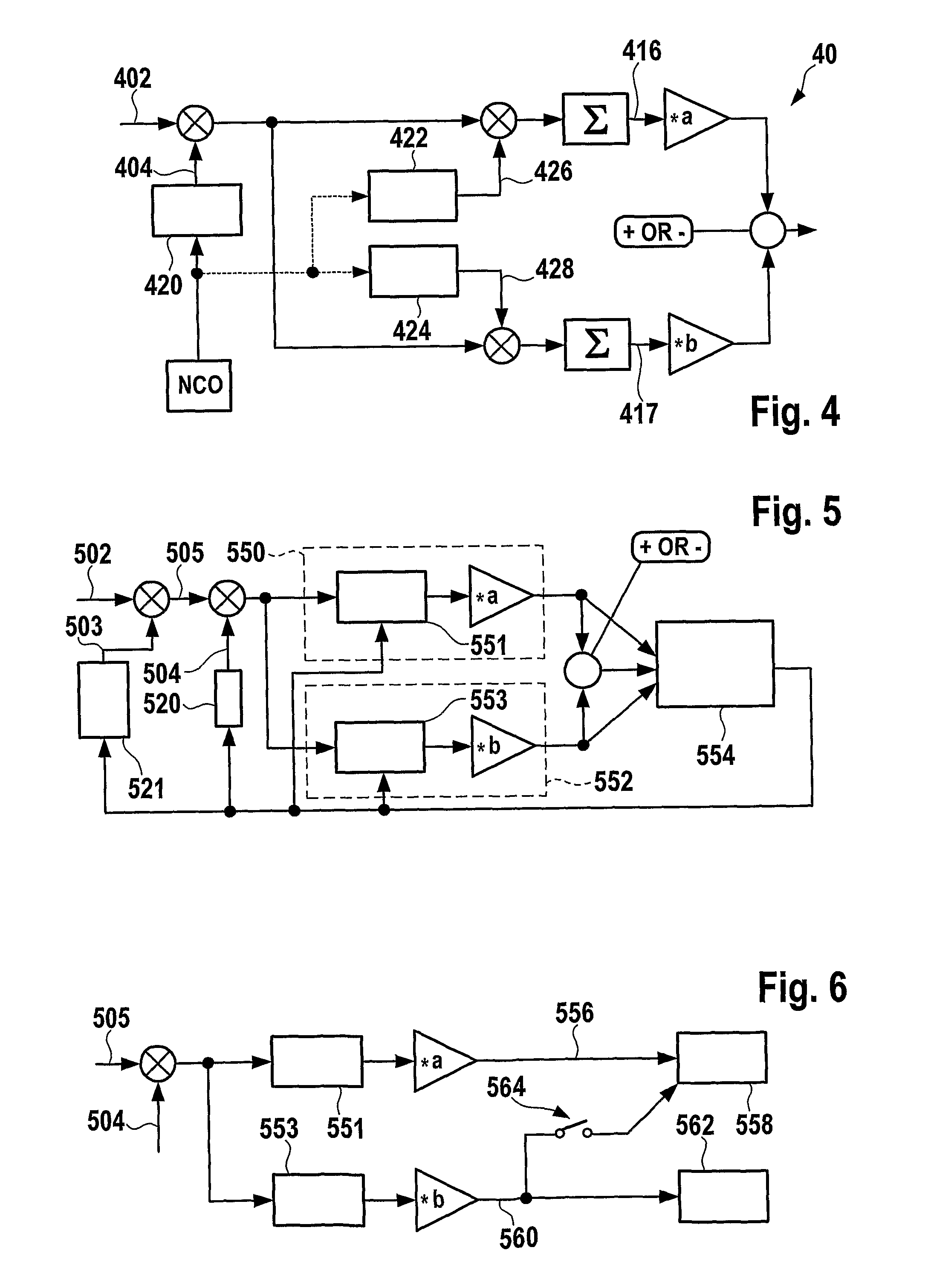Spread spectrum signal
a spectrum signal and signal technology, applied in the field of signal modulation, can solve the problems of reducing positioning accuracy, affecting overall tracking performance, time-varying amplitude components of modulation, etc., and achieves the effect of high spectral control and good overall synchronisation capabilities
- Summary
- Abstract
- Description
- Claims
- Application Information
AI Technical Summary
Benefits of technology
Problems solved by technology
Method used
Image
Examples
Embodiment Construction
[0060]Referring to FIG. 1, an example of a spreading waveform 10 for modulating a carrier wave is discussed in more detail. In this embodiment, the spreading waveform 10 is obtained by coherently summing a first binary waveform 12 formed by a BOC(m1, n) multiplied by a first coefficient a, and a second binary waveform 14 formed by a BOC(m2, n) multiplied by a second coefficient b. The BOC(m2, n) waveform could advantageously be replaced by a more general binary waveform, like a BCS e.g. a BCS([1-1 1 1 1 1 1 1 1 1], 1]). As seen in FIG. 1, the spreading waveform 10 has a crenellated shape. The same code 16 is applied to both waveforms. In other words, the first waveform 12 and the second waveform 14 are modulated with a single binary code sequence 16 according to the formula:
s(t)=(a·w1(t)+b·w2(t))·PRN(t).
[0061]This is also written as:
s(t)=a·w1(t)·PRN(t)+b·w2(t)·PRN(t),
[0062]where t represents a time variable, s(t) is the resulting spreading waveform 10, w1(t) is the first binary wave...
PUM
 Login to View More
Login to View More Abstract
Description
Claims
Application Information
 Login to View More
Login to View More - R&D
- Intellectual Property
- Life Sciences
- Materials
- Tech Scout
- Unparalleled Data Quality
- Higher Quality Content
- 60% Fewer Hallucinations
Browse by: Latest US Patents, China's latest patents, Technical Efficacy Thesaurus, Application Domain, Technology Topic, Popular Technical Reports.
© 2025 PatSnap. All rights reserved.Legal|Privacy policy|Modern Slavery Act Transparency Statement|Sitemap|About US| Contact US: help@patsnap.com



